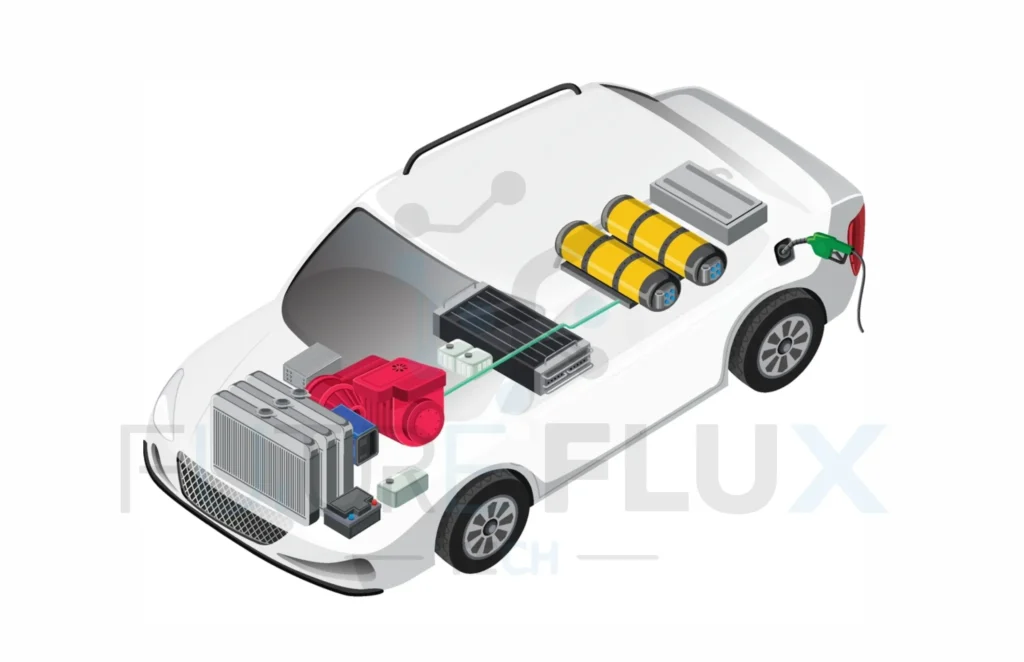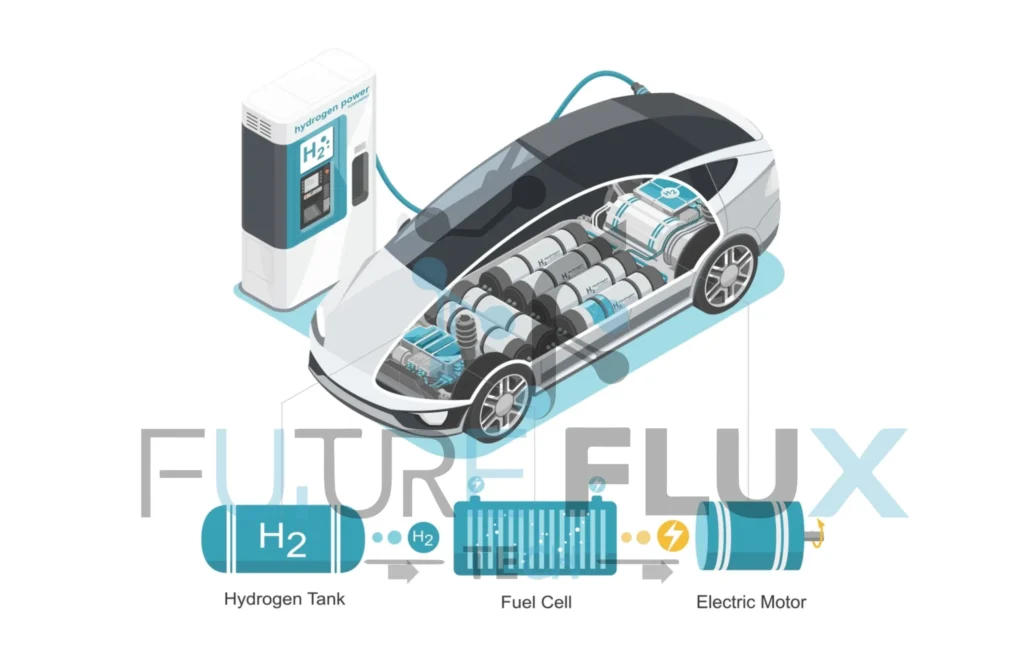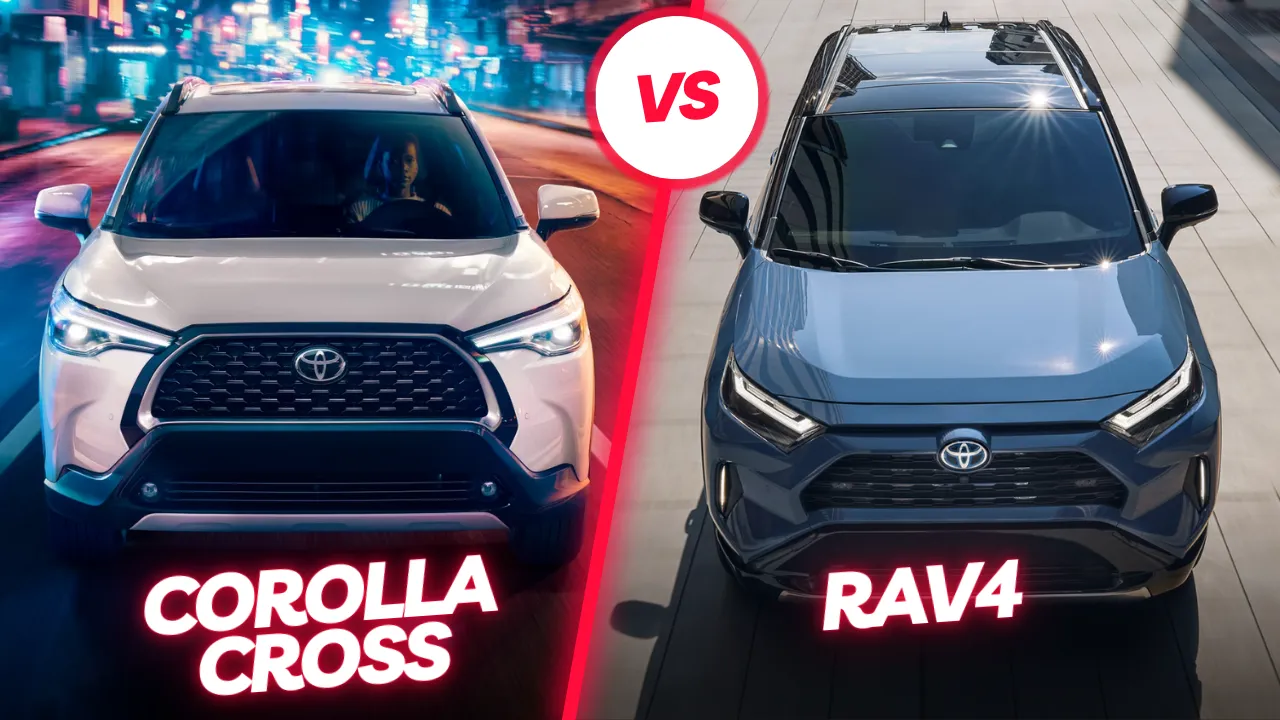Electric vehicles keep getting better with time. The U.S. Department of Energy is looking for better alternatives to promote eco-friendly transportation. Have you heard of EVs that run on hydrogen? Does that make them “electrically” powered vehicles? The answer is, yes. Fuel cell electric vehicle do not only rely on batteries. They have a fuel cell that uses hydrogen to produce electricity. However, why go to such lengths? What’s so special about FCEVs? The present EVs are sustainable enough but their batteries are still a problem. Despite such drawbacks, they are still our eco-champions. Let’s understand Fuel Cell Electric Vehicles (FCEVs), their purpose, and whether they are better than EVs.
Is a Fuel Cell Electric Vehicle sustainable?

Battery vs. Fuel Cell
Fuel cell EVs are more like all-electric EVs. They use batteries more like a backup rather than an energy source. In my previous articles, I discussed regenerative braking and how it helps EVs to recharge. FCEVs use batteries to reuse braking energy that charges them up during short breaks. Hydrogen gas is not toxic and does not contribute to the greenhouse effect. Therefore, these Hydrogen Fuel Cells EVs are equally sustainable as other EVs. They do not produce tailpipe emissions, instead release water vapors and warm air. Their pros are pretty much similar to regular EVs.
Sustainable Mechanism
What about the mechanism? EVs run on motors and batteries which convert electricity to kinetic energy. However, FCEVs have a different mechanism. You may wonder how FCEVs produce water vapors. The process is a little more complicated than EVs. These Zero-Emission Vehicles have an electrolyte membrane placed between a cathode and an anode. The anode receives hydrogen while the cathode receives oxygen. Anode breaks hydrogen into protons and electrons thanks to a chemical reaction in the fuel cell. Protons travel through the membrane to the cathode meeting with electrons flowing through an external circuit. This Clean Energy Transportation releases water when the oxygen, protons, and electrons combine.
Can FCEVs surpass other Electric Vehicles?

FCEVs and battery-powered EVs go hand in hand in reducing environmental pollution. They are not rivals, more like business partners. However, each vehicle works separately to reduce greenhouse emissions. The Alternative Fuels Data Center (AFDC) has provided insights on both vehicles. Here’s what makes them different.
1- Fuel source
The first thing that separates Fuel Cell EVs from BEVs is their fuel source. First, let’s discuss EV’s source of fuel. EVs operate on electricity that can be derived from wind, solar, and hydropower plants. This makes them a great example of Sustainable Transportation. However, FCEVs are not so sustainable. Sometimes their fuel is derived from non-sustainable sources like natural gas and fossil fuel. This gives rise to a question regarding their credibility. FCEVs may not win in the fuel department due to the scarcity of Hydrogen Refueling Infrastructure in the US.
2- Efficiency
When it comes to efficiency, both EVs are equally competent. BEVs rely solely on their batteries to go longer distances. Moreover, they can reuse the energy created by regenerative braking to charge. The FCEVs might be a step ahead in Energy Efficiency. They do not rely on a battery instead they work using hydrogen as a fuel. However, there is a limit to what they can do. For instance, FCEVs using sustainable hydrogen fuel sources might hurt your pocket. They get hydrogen by electrolysis of renewable electricity. The process requires additional effort which raises their price tag.
3- Refill time
What’s one thing that irks you about EVs? Of course, the lengthy charging time. BEHVs can take up to 8 hours during home charging and half an hour at the station. The reason behind such a long refill time is their battery size. EVs have different batteries with different capacities. The larger the battery the more time it will take to recharge it. However, a fuel cell electric vehicle has exempted itself from such hassle. How so? They can be refueled in a span of few minutes similar to their gas-powered cousins. EVs can also be charged quickly but at the cost of battery health.
4- Available incentives
Both EVs are an assent to the nation. The US government is trying to promote Sustainable Transportation via tax credits and other incentives. They want to lead America to a greener future. BEV enthusiasts in Colorado might get a whopping $12,500 tax credit when they buy an EV. Moreover, other incentive programs like the Xcel Energy Rebate offer additional credits when people purchase Zero-Emission Vehicles from them. Some incentive programs might allow citizens to replace their gas cars with EVs. However, FCEVs are mostly operating in California. The residents will get $4500 tax credits and $9500 federal tax credits. Some automakers may provide a fuel card offering $15000 in funds for hydrogen fuel.
5- Fuel stations
Both EVs and FCEVs require frequent recharges. In comparison to FCEVs, EVs are more popular. Leading companies like Tesla, have placed several charging stations Pete Buttigieg, the Transportation Secretary has emphasised the importance of charging stations influencing people to shift to Clean Energy Transportation. However, FCEVs are a different story. First, they are mostly present in California. Secondly, they are still a step behind EVs. Therefore, the fueling stations are limited to a few states besides California. Moreover, a lack of Hydrogen Refueling Infrastructure may deplete their popularity completely.
6- Performance
Both EVs deliver optimal performance on the road. Previously, I discussed how EV motors convert electricity to kinetic energy. The process is direct and does not require any catalysts. However, FCEVs derive energy from hydrogen fuel and produce electricity via an oxygen-hydrogen reaction. Both processes offer Energy Efficiency but EVs won the race again. Their batteries directly utilize electricity to drive the car with less energy wastage. Future technologies might improve FCEVs’s efficiency and sustainability.
7- Fuel costs
Which is cheaper? Electricity or hydrogen? In theory, electricity is cheaper than any other fuel. Why is that? Electricity costs rarely change and depend on the area you reside in. It can be produced using solar energy or wind energy that is naturally available. However, gas prices may fluctuate every now and then. EVs are cheaper to recharge compared to fuel cell electric vehicle. Usually, FCEVs cost around $80 to refill. This is way higher than your average gas car or an EV. Additionally, some companies may offer a $15000 prepaid fueling card which may cover their fueling costs.
8- Driving range
On average, an FCEV offers more than a 300-mile driving range which is sufficient for commercial use. On the other hand, BEVs are now offering more than a 500-mile driving range. This again puts EVs ahead of the Hydrogen Fuel Cells vehicles, at least that’s what the stats show. However, theoretically, FCEVs offer longer driving ranges than BEVs. FCEVs also boast a good fuel economy compared to gas cars. The Toyota Mirai has been crowned as the longest-range hydrogen EV. It covered a distance of 800 miles on a hydrogen tank scoring a world record under its name. Such an event might prove fruitful for Fuel Cell Electric Vehicles (FCEVs) future.
Conclusion
FCEVs may not be as popular as BEVs but they are equally sustainable. They consist of fuel cells that convert hydrogen into electricity. These EVs produce no tailpipe emissions and release water vapor and warm air instead. Hydrogen is naturally present in the air which makes it non-toxic to the environment. However, a fuel cell electric vehicle is limited to a few states in the US. Due to high fuel prices and limited refueling infrastructure, they still have a long way to go. Like most EVs, these EVs enjoy similar protocols, including beneficial tax credits and other incentives.
What are the different EV charging station business models? Are EVs useless in winter? Learn more by visiting our blog.
I’m Waqas, an electric vehicle enthusiast and tech writer with over 6 years of experience covering the EV industry. I write in-depth articles, comparisons, and reviews to help readers understand the fast-evolving world of electric mobility. From battery technology to EV launches and charging trends, I aim to make complex EV topics simple, engaging, and informative for everyday drivers and curious readers alike.





